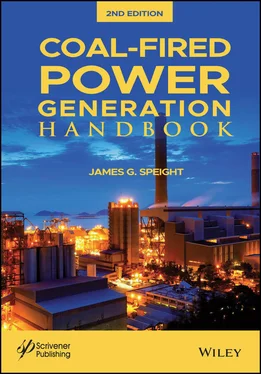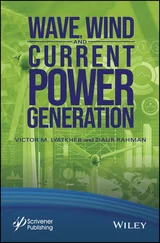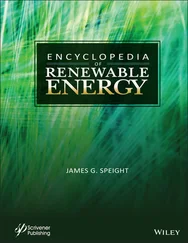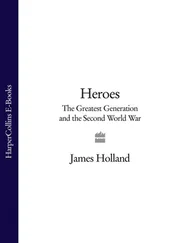Sulfur in coal occurs as sulfates, organic sulfur, and pyrites (sulfides of iron). The sulfates usually are present in small quantities and are not considered a problem. Organic sulfur is bound molecularly into the coal and is not removable by typical coal preparation processes. Pyrites generally are present in the form of modules or may be more intimately mixed with the coal. Coal preparation plants remove only a portion of the pyritic sulfur; therefore the degree of sulfur reduction depends on the percentage of pyrites in the coal, the degree to which this is intimately mixed with the coal, and the extent of coal preparation.
The size of the pieces of coal ranges upward to that of the size of foreign materials, such as a chunk of rock that has fallen from the mine roof or a metal tie; large pieces of coal from a hard seam are sometimes included. Foreign materials are introduced into the coal during the mining process, the most common being roof bolts, ties, car wheels, timber, shot wires, and cutting bits.
Air pollution control often requires partial removal of pyrites with the ash to reduce the sulfur content of the coal (Godfrey, 1994). Ash content often must be controlled to conform to a prescribed quality stipulated in contractual agreements. Because of firing characteristics, it is often as important to retain the ash content at a given level as it is to reduce it. Freight savings are substantial when impurities are removed prior to loading. Finally, the rejected impurities are more easily disposed of at the mine site remote from cities than at the burning site, which is usually in a populated area.
Coal preparation is carried out at a facility that washes coal to remove soil and rock, preparing it for transport to market – a coal preparation facility may also be called a coal handling and preparation plant . During the preparation process , as much waste as possible is removed from the coal to increase the market value of the coal and reduce the transportation costs.
Coal needs to be stored at various stages of the preparation process, and conveyed around the preparation plant facilities. Stored coal ( stockpiled coal ) provides surge capacity to various parts of the preparation plant. A simple stockpile is formed by machinery dumping coal into a pile, either from dump trucks, pushed into heaps with bulldozers, or from conveyor belt booms. More controlled stockpiles are formed using a stacker (a large machine used to pile the coal into a stockpile) or multiple stackers to form piles along the length of a conveyor, and reclaimers (a large machine used to recover coal from a stockpile) to retrieve the coal when required for product loading. Taller and wider stockpiles reduce the land area required to store a set tonnage of coal. Larger coal stockpiles have a reduced rate of heat lost, leading to a higher risk of spontaneous combustion.
Briefly, the mined coal is loaded into a stockpile, with a reclaim tunnel beneath it. Then, the coal is transported to a raw coal silo, usually 10,000-ton capacity, for feed to the plant at a constant rate. Generally, the first stage is a crushing/screening plant (Figure 3.1), with heavy media processing (for coarse coal sizes – 2-inch x 10 mesh), spirals for the middling sizes (10 mesh x 60 mesh), flotation for the -60 mesh fine coal feed.
Most conventional coal cleaning operations utilize gravity methods for the coarser size fractions and surface treatment methods for the finest particle sizes (Riley and Firth, 1993). The selection of equipment, especially for the finer sizes, depends on the mining method, coal hardness, and size distribution and amounts thereof. Typical of these is a dense media cleaning process (Fourie, 1980) which uses dense media vessels or jigs for the coarsest size, usually +3/8”, dense media cyclones, concentrating tables or jigs for the 3/8” x 28 mesh size, water-only cyclones or spirals and sometimes flotation for the 28 x 100 mesh size and flotation for the -100 mesh coal.
Screening and centrifugal dryers dewater the coarser products while screen-bowl centrifuges and sometimes thermal dryers are utilized to reduce the moisture content of the finest sizes. If the percentage of fines in the coal is high, wetting of coal can decrease the percentage of unburned carbon and the excess air level required to be supplied for combustion ( Table 3.3). In cases where the coal lots have excessive fines, it may be advisable to blend the predominantly lumped coal with lots containing excessive fines. Coal blending may thus help to limit the extent of fines in coal being fired to not more than 25%. Blending of different qualities of coal may also help to supply a uniform coal feed to the boiler.
Metallurgical coal cleaning plants utilize thermal dryers – the coal is softer and more friable and thus has a finer size distribution after extraction by the mining machines. Coals for metallurgical use must be thoroughly processed and dried to meet the end user requirements. Additionally, flotation is typically utilized in these circuits due to the quantity of coal and quality of the needed end product (low ash, low sulfur) (Aplan, 1993; Burchfield, 1993).

Figure 3.1General layout of a coal preparation/coal cleaning plant (Speight, 2013).
Table 3.3 Extent of coal wetting based on fines and surface moisture.
| Fines (% w/w) |
Surface moisture (% w/w) |
| 10-15 |
4-5 |
| 15-20 |
5-6 |
| 20-25 |
6-7 |
| 25-30 |
7-8 |
Powder River Basin coal (Wyoming), although desirable because of other properties that do not leave a large footprint on the environment, is extremely friable and will break down into smaller particles virtually independent of how the coal is transported or handled. The coal represents the extremes of handling problems; dust is an issue when the coal is fine and dry; plugging in bunkers and chutes is an issue when the same fine coal is wet. Once Powder River Basin coal is exposed by mining, the degradation process begins and the majority of the damage can occur in a short time, even as short as a few days. The extent of the degradation that occurs depends in large part on the distance to the plant from the mine, such as the length of time that the coal is exposed to the atmosphere during transportation. Additional factors such as crushed run of mine size and specific handling procedures also impact the degradation process. Additional decomposition occurs during handling and storage in a pile and bunker, bin, or silo. The root cause of the degradation is believed loss of moisture that impacts the coal both mechanically and chemically, through the generation of additional surface reaction area (Hossfeld and Hatt, 2006).
On the other hand some steam coals, especially the harder ones (low Hardgrove index), and some coals produced from surface mines have smaller quantities of the –100 mesh size. In many plants there is such a small quantity of the -100 mesh size that this material is sent to disposal and is considered uneconomical to recover.
Coal flotation is a physiochemical process which exploits the differences in the wettability of hydrophobic clean coal and that of hydrophilic foreign particles (Arnold and Aplan, 1989; Fecko et al. , 2005). It is, therefore, subject to the surface properties of coal pyrite and other types of commercially worthless material present in coal which plays a major role in determining separation of such material from coal (Luttrell and Yoon, 1994; Luttrell et al. , 1994).
Читать дальше













